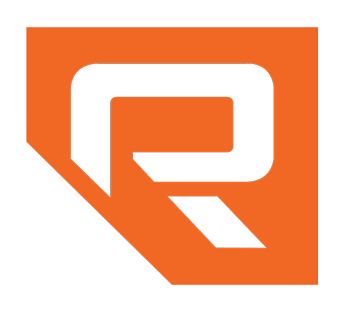The Supreme Courts’ recent decision in Amgen v. Sanofi reaffirms old precedent and applies it to modern technologies
Erin Bies & Navin Bora, Esq.
The recent Supreme Court decision Amgen v. Sanofi (“Amgen”) provides useful guidance relating to boundaries concerning patent enablement. In Amgen, the Supreme Court confronted the question of what amount of “enablement” (defined under 35 U.S.C. §112(a) as requiring that the “specification shall contain a written description of the invention, and of the manner and process of making and using it, in such full, clear, concise, and exact terms as to enable any person skilled in the art to which it pertains, or with which it is most nearly connected, to make and use the same”) is required for broad patent claims to an entire genus of antibodies. In an uncontroversial 9-0 decision, the Court reaffirmed the classic precedent for patent enablement, while simultaneously reigning in the current trend in life-sciences and biotechnology patents to make sweeping genus-level claims.
As large pharmaceutical corporations, both Amgen and Sanofi sought to use antibodies to treat high cholesterol disorders as an alternative to drugs such as statins. The causal factor behind such disorders is often “bad cholesterol,” such as low-density lipoprotein (LDL). The body naturally regulates LDL through LDL receptors that bind and degrade LDL. However, the LDL receptors are themselves subject to a regulatory process; the enzyme PCSK9 binds LDL receptors, tagging them for degradation. As a treatment for high cholesterol, monoclonal antibodies can be used to bind PCSK9 and then block PCSK9 from inducing breakdown of LDL receptors. More LDL receptors means a higher rate of LDL recycling and therefore less overall LDL.
Amgen attempted to patent the entire genus of antibodies that fulfill the function of binding to PCSK9 and blocking PCSK9 from binding to the LDL receptor (preventing the PSCK9 from tagging the receptor for degradation). This means if an antibody performs this function, then it would be covered by Amgen’s broad patent claims. When Amgen sued Sanofi for patent infringement, Sanofi argued that Amgen’s patents were invalid for not enabling a person skilled in the art to make and use all the antibodies claimed.
The Supreme Court agreed with Sanofi regarding their argument that Amgen’s asserted patents were invalid for lack of enablement. More particularly, Amgen set out two methods for enabling others to produce the antibodies: the “Roadmap” method and the “Conservative Substitution” method. Both methods include laboratory research techniques that Amgen used for the discovery of the antibody sequences they directly claimed. The “Roadmap” method relies on a given research scientist generating a range of antibodies, then successively testing such antibodies for binding to PCSK9 and then blocking of the PCSK9-LDL receptor interaction. The “Conservative Substitution” method involved staring with a known antibody that performs the requisite function, and switching out amino acids for other amino acids that perform similar functions.
The Supreme Court held that the more a patent claimed, the more it must enable. The written description and specification of a patent must provide enough information for a person reasonably skilled in the art to make and use the invention. Here, Amgen’s approach simply required an amount of experimentation that was not reasonable for “any person skilled in the art to which it pertains … to make and use the same” as provided by applicable statutory law. With both the “Roadmap” method and the “Conservative Substitution” method, Amgen offered “little more than advice to engage in ‘trial and error.’” Accordingly, Amgen cannot legitimately monopolize an entire class of antibodies defined by their function – there are millions of possible combinations. Instructing scientists to go back to the laboratory research methods from the beginning is not sufficient to enable others to produce the same antibodies. There was not any guiding quality that would let a future scientist take the methods disclosed and reliably create new PCSK9-binding antibodies from it. Amgen claimed a lot but enabled little.
The purpose behind the enablement requirement is to ensure that after the expiration of the term of a patent, the public has an opportunity to use the invention— alternatively put, the purpose of obtaining a patent relates to encouraging or otherwise facilitating innovation. Without an adequate description that allows others to follow in the inventor’s footsteps, a patent has not done its part in contributing to the sum of collective human knowledge.
The impact of Amgen v. Sanofi appears comparatively small in terms of changing how patents legally function. Instead, Amgen reaffirms old precedent and applies it to modern technologies. The Court’s holding significantly restricts entire genus claims in biotechnology and pharmaceuticals, demonstrating that mere trial and error is not sufficient to fulfil the enablement requirement.
At Renner Otto, the oldest intellectual property firm in Cleveland, we specialize in assisting our clients as they develop efficient Intellectual Property strategies that are tailored to their business’s needs. Our attorneys are knowledgeable on a wide range of domestic and international IP issues, and we partner with Firms around the world to better serve our clients.
Someone from the Renner Otto team would be happy to discuss this topic or any related Intellectual Property matters. Contact us for a complimentary consultation to see how we can help your business move your innovation forward.
The attorneys at Renner Otto strive to be authorities in all matters concerning the ever-evolving landscape of Intellectual Property; however, the information provided on our website is not intended to be legal advice, nor does it create an attorney-client relationship.

